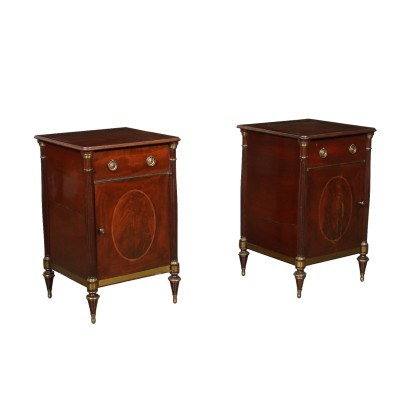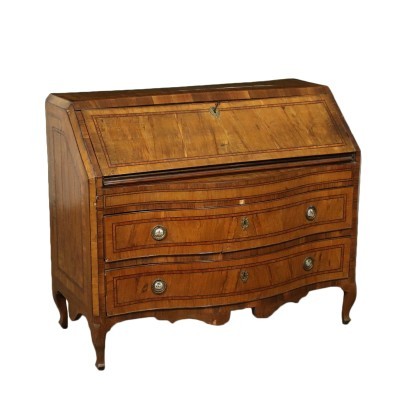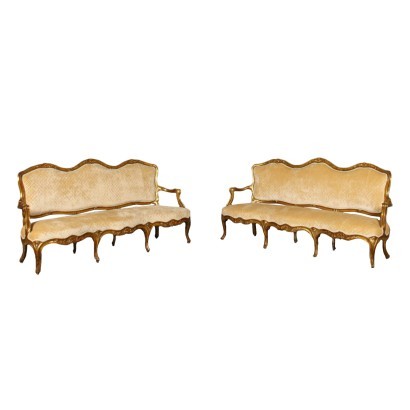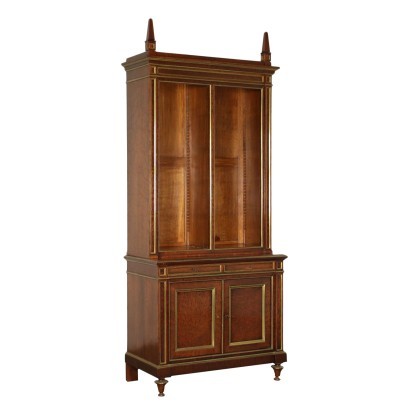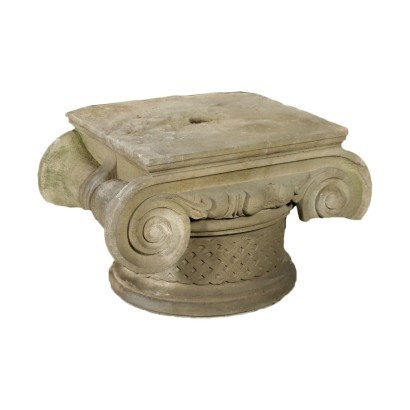Pair Of Side Tables George IV Brass Mahogany England Early 19 Century
Features
Style: George IV (1760-1830)
Age: 19th Century / 1801 - 1900
Origin: England
Main essence: Mahogany
Material: Brass
Description
Pair of side tables George IV, resting on turned truncated conical feet, on the front, framed between a pair of semi-columns, they have a small door that conceals a drawer with compartments and a sliding door; under the top, they have a drawer. In mahogany, the door is decorated with an oval threaded frame; they are decorated with applications and brass frames.
Product Condition:
The item shows signs of wear due to age. Any damage or loss is displayed as completely as possible in the pictures. It may require restoration and recovery of french polish. Product with a Certificate of Authenticity and Lawful Origin.
Dimensions (cm):
Height: 96
Width: 61,5
Depth: 59,5
Certificate issued by: Enrico Sala
Additional Information
Style: George IV (1760-1830)
It is part of the so-called "Georgian" period.This term designates the stylistic activity that took place in England between 1714 and 1830 and included the reigns of George I, George II, George III and George IV.
It is characterized, at its beginnings, by an attitude of reaction to the Baroque.
Precise characteristics and distinctions of this style are not clearly identifiable in the furniture created in England in the eighteenth century.
In the first half of this century, cabinet-making and the products of the various categories of English applied art were affected by the continuous changes in taste and manifested, in the diversity of trends and influences, the uncertainty of a precise stylistic orientation.
In the second half of the eighteenth century, the sensitivity and exceptional ingenuity of four strong personalities, destined to guide the English taste and customs of the time, intervened in the second half of the eighteenth century: Th. Chippendale, R. Adam, G. Hepplewhite and Th. Sheraton.
Find out more with our insights:
FineArt: Tallboy George II, England c.1730
FineArt: Pair of Irish Mirrors, in George III Style, second half of the 19th century



